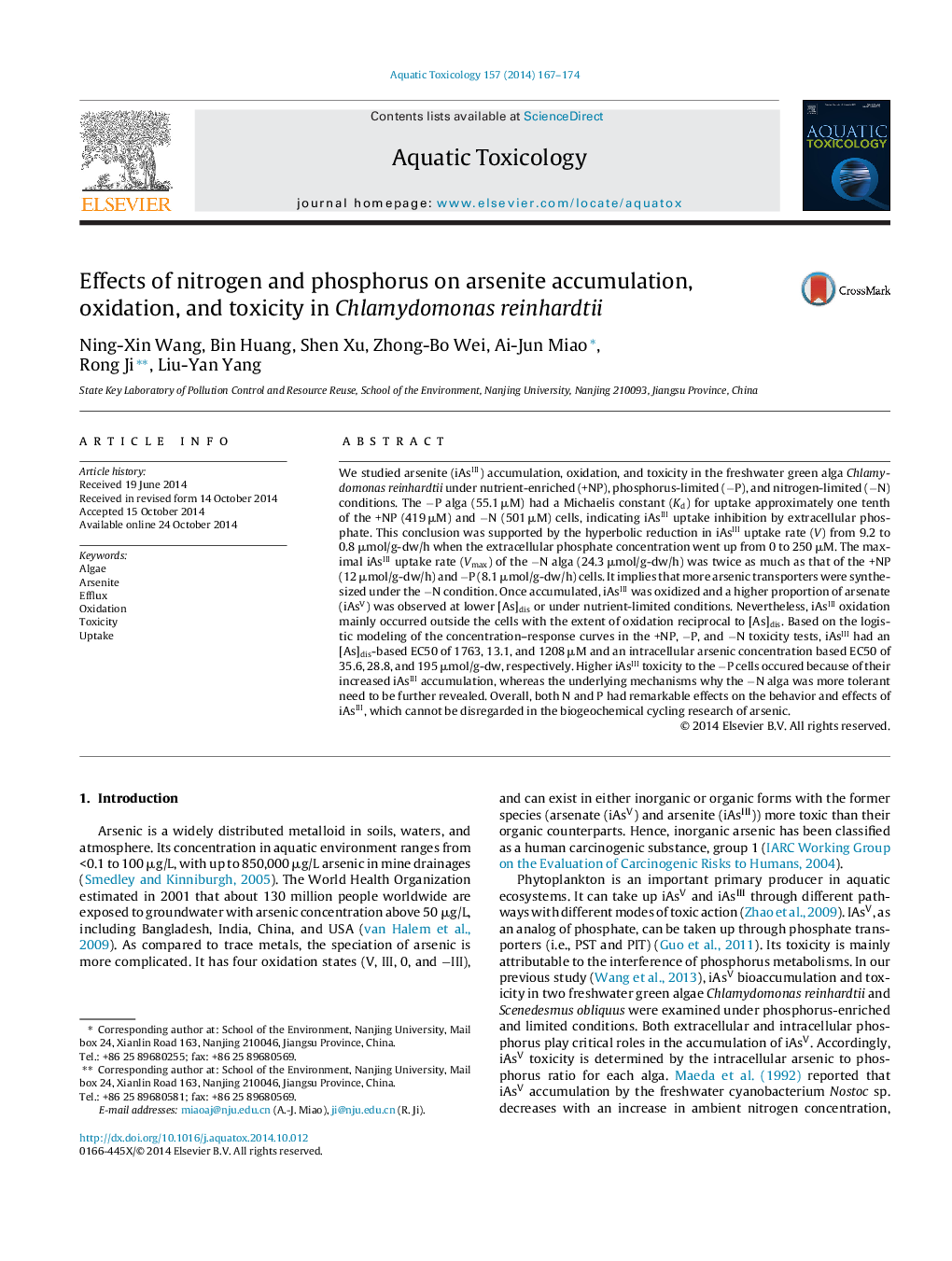| Article ID | Journal | Published Year | Pages | File Type |
|---|---|---|---|---|
| 4529305 | Aquatic Toxicology | 2014 | 8 Pages |
•Extracellular but not intracellular P inhibited iAsIII uptake.•N limitation induced the synthesis of iAsIII transporters.•iAsIII oxidation occurred not only on the cell surface but also in the cells.•Both iAsIII and iAsV could be excreted out of the cells at the same rate.•iAsIII toxicity was unaffected by P but alleviated under the −N condition.
We studied arsenite (iAsIII) accumulation, oxidation, and toxicity in the freshwater green alga Chlamydomonas reinhardtii under nutrient-enriched (+NP), phosphorus-limited (−P), and nitrogen-limited (−N) conditions. The −P alga (55.1 μM) had a Michaelis constant (Kd) for uptake approximately one tenth of the +NP (419 μM) and −N (501 μM) cells, indicating iAsIII uptake inhibition by extracellular phosphate. This conclusion was supported by the hyperbolic reduction in iAsIII uptake rate (V) from 9.2 to 0.8 μmol/g-dw/h when the extracellular phosphate concentration went up from 0 to 250 μM. The maximal iAsIII uptake rate (Vmax) of the −N alga (24.3 μmol/g-dw/h) was twice as much as that of the +NP (12 μmol/g-dw/h) and −P (8.1 μmol/g-dw/h) cells. It implies that more arsenic transporters were synthesized under the −N condition. Once accumulated, iAsIII was oxidized and a higher proportion of arsenate (iAsV) was observed at lower [As]dis or under nutrient-limited conditions. Nevertheless, iAsIII oxidation mainly occurred outside the cells with the extent of oxidation reciprocal to [As]dis. Based on the logistic modeling of the concentration–response curves in the +NP, −P, and −N toxicity tests, iAsIII had an [As]dis-based EC50 of 1763, 13.1, and 1208 μM and an intracellular arsenic concentration based EC50 of 35.6, 28.8, and 195 μmol/g-dw, respectively. Higher iAsIII toxicity to the −P cells occured because of their increased iAsIII accumulation, whereas the underlying mechanisms why the −N alga was more tolerant need to be further revealed. Overall, both N and P had remarkable effects on the behavior and effects of iAsIII, which cannot be disregarded in the biogeochemical cycling research of arsenic.
